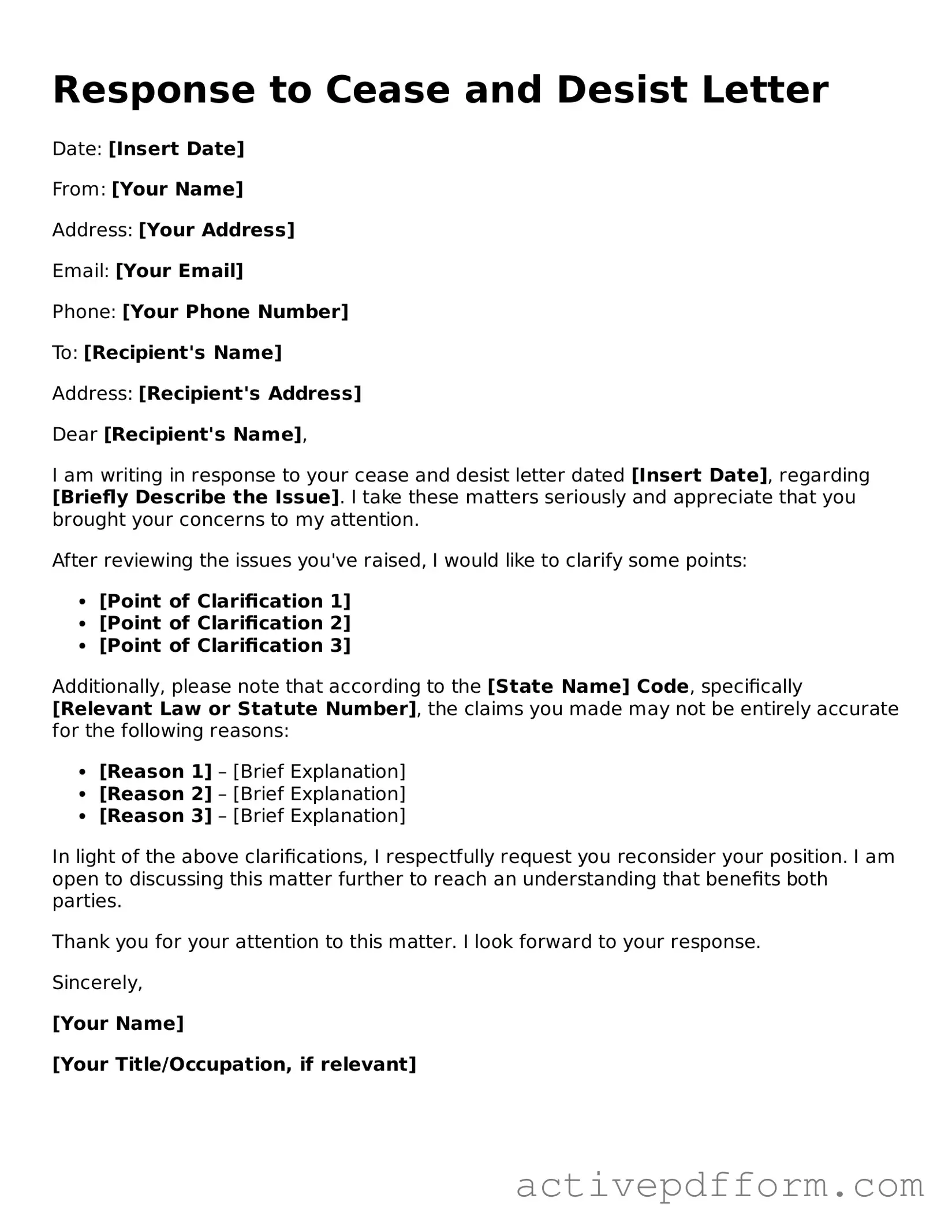What is a cease and desist letter?
A cease and desist letter is a formal request asking an individual or organization to stop a specific activity that is believed to be infringing on rights or causing harm. This letter serves as a warning and outlines the reasons for the request, often including potential legal consequences if the activity continues.
Why might I receive a cease and desist letter?
You may receive a cease and desist letter for various reasons. Common reasons include copyright infringement, trademark violations, defamation, or harassment. The sender believes that your actions are unlawful or harmful, and they wish to resolve the matter without escalating to legal action.
What should I do if I receive a cease and desist letter?
Receiving a cease and desist letter can be alarming. First, carefully read the letter to understand the claims being made. Consider consulting with a legal professional who can help you assess the situation and determine the best course of action. Responding promptly is crucial, as it demonstrates your willingness to address the issue.
Can I ignore a cease and desist letter?
Ignoring a cease and desist letter is generally not advisable. Doing so could lead to further legal action, which may result in court proceedings or financial penalties. It is important to take the letter seriously and seek guidance on how to respond appropriately.
How do I respond to a cease and desist letter?
Your response should be thoughtful and well-structured. Acknowledge receipt of the letter, address the claims made, and clarify your position. If you believe the claims are unfounded, you may explain your reasoning. If you intend to comply, outline how you plan to do so. Consulting with a legal professional can help ensure your response is effective.
What happens if I don’t respond to the letter?
If you choose not to respond, the sender may interpret your silence as an admission of guilt or unwillingness to cooperate. This could lead them to pursue further legal action against you. It is essential to communicate, whether you agree with the claims or wish to contest them.
Can I negotiate the terms in a cease and desist letter?
Yes, negotiation is possible. If you believe that the claims are valid but wish to discuss terms, you can propose a resolution that works for both parties. This might include modifying your actions or reaching a settlement. Open communication can often lead to a more amicable resolution.
What are the potential consequences of not complying with a cease and desist letter?
Failing to comply with a cease and desist letter can lead to serious consequences. The sender may escalate the matter by filing a lawsuit against you. This could result in costly legal fees, damages, or even an injunction requiring you to cease the disputed activity. Taking the letter seriously is crucial to avoid these potential outcomes.
Should I consult a lawyer when responding to a cease and desist letter?
Consulting a lawyer is highly recommended. A legal professional can provide guidance tailored to your specific situation, helping you understand your rights and obligations. They can also assist in crafting a response that protects your interests and helps you navigate any potential legal challenges.
